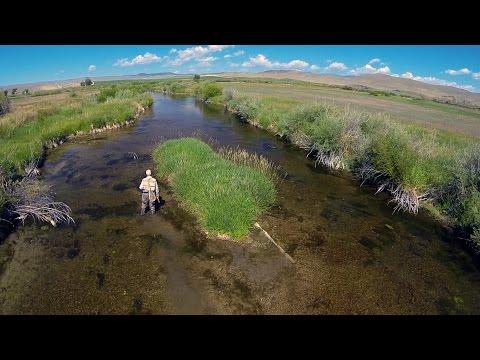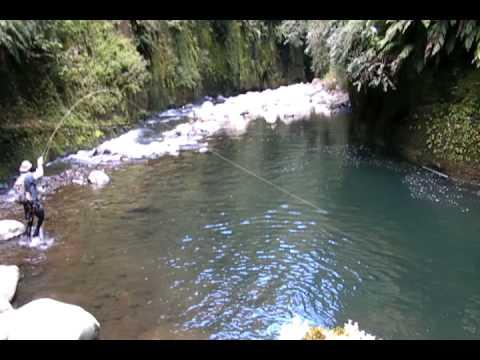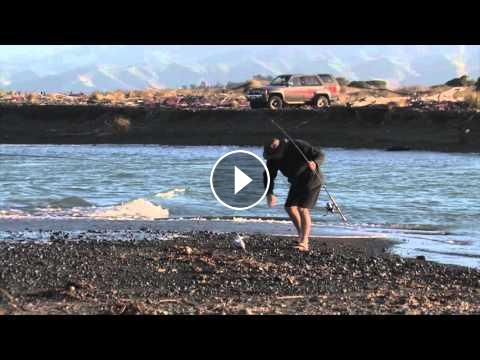Salt water fishing for New Zealand kahawai
Please subscribe to our page and LIKE our videos.
Back down the bar fishing for sea run Kahawai as they go on the chase for white bait. Silver spinners are used the same as for samon fishing. they are agood fighting fish that hit the spinners hard and are great to eat , ether smoked or raw as sashimi .
The kahawai is widespread throughout New Zealand and will be found from estuaries to the outer islands.
This sleek fish has an average size between 40-50cm long, and an average wiehgt of 1 to 2kg. Appropriate tackle is 6-10kg mono or braid is even better as the bites are small. As their tremendous fighting ability has earned them a reputation as a top light tackle game fish, especially on salt-water fly (SWF). They can be found year round and will be enticed by plenty of berley.
Kahawai are most often caught on a jig, softbait or trolled lure or fly when they are schooling. A cast spinner will also work well in the same situation. Match the hatch. If they are feeding on small silver baitfish, a silver jig will be deadly for example.
A good berley trail will often bring in Kahawai when you are targetting snapper and they'll be caught readily on the strayline (Kiwi & Aussie versions), and dropper rigs, also flashers with small cubes of bait
Kahawai can be caught in most of our inshore waters. They are often found in schools on or near the surface and generally where you see birds diving and feeding, the kahawai will not be far away.
Morning & evening seem best but kahawai can be caught year round and at any time during the day.Soft baits, jigs, flies, spinners and flasher rigs are all very effective. They'll eat any of our normal cut baits such as pilchards, squid skipjack etc.
Kahawai often school in an iceberg shape. The fish that are showing on the surface may represent only a small percentage of the total school, which is invisible under the water.
Barging into the visible section of the school, will most likely put down the visible fish and often also put down the invisible fish.
It is a common sight; a school of kahawai is clearly visible working on the surface, and it soon attracts a fleet of boats that charge into the middle of the school, trolling lures. The school quickly disappears. Put down by the boats in their midst.
Then follows a game of catch-me-if-you-can; the school ducks and dives all over the place with the flotilla of boats chasing them, charging about; soon this will put the school down for good.
Trolling for kahawai does produce hook-ups; however it can be the least successful method of catching these fish. If you must troll, approach the school carefully, racing up at full throttle is an ideal method of putting the school down.
The best method is to quietly approach the school from behind and in the direction the school is moving, and move the boat so that the lure intersects the school, not the boat.
A 'figure-eight' trolling pattern will achieve this aim. Remember the iceberg theory. Often you can pick up fish some way off the visible surface activity.
Lures for trolling should ideally match the size of the food the kahawai are chasing. My personal favourite is a metal jig only about 40 mm long, from the Stingsilda range, but there are lures of similar size and shape, in tackle shops. Trolling these small lures behind a diving trolling-board seems to produce well.
Another lure that will do the trick when kahawai are being fickle is a saltwater fly, again trolled behind a diving board. The fly, once wet forms the shape and size of whitebait and small infant pilchards, and the like.
If you troll for trout, drag out some of your trout lures. Toby's and Tasmanian Devil lures work well. Just as in freshwater, the addition of a fly about 20 cm behind the lure makes the lure even more attractive.
Troll lures at a sedate speed, just above walking pace, Grandma's walking pace.
I find that when trolling at these low speeds a couple of twitches on the line, either by jerking the rod tip, or by giving the line itself a short sharp pull, often triggers strikes. However don't take walking pace trolling speed as a hard and fast rule.
You need to match the trolling speed to the speed the kahawai are moving at, and sometimes they can move at a fair clip.
There are many diving trolling-lures that catch kahawai. The bibbed lures of the Rapala type all take fish; in general, the smaller the better. Lures around 40 to 60 mm long seem to work best. Using bibbed lures of this size means tackle must be light. Anything over a line weight of around 6kg (12lb) will kill the action of the lure.
Please subscribe to our page and LIKE our videos.
Back down the bar fishing for sea run Kahawai as they go on the chase for white bait. Silver spinners are used the same as for samon fishing. they are agood fighting fish that hit the spinners hard and are great to eat , ether smoked or raw as sashimi .
The kahawai is widespread throughout New Zealand and will be found from estuaries to the outer islands.
This sleek fish has an average size between 40-50cm long, and an average wiehgt of 1 to 2kg. Appropriate tackle is 6-10kg mono or braid is even better as the bites are small. As their tremendous fighting ability has earned them a reputation as a top light tackle game fish, especially on salt-water fly (SWF). They can be found year round and will be enticed by plenty of berley.
Kahawai are most often caught on a jig, softbait or trolled lure or fly when they are schooling. A cast spinner will also work well in the same situation. Match the hatch. If they are feeding on small silver baitfish, a silver jig will be deadly for example.
A good berley trail will often bring in Kahawai when you are targetting snapper and they'll be caught readily on the strayline (Kiwi & Aussie versions), and dropper rigs, also flashers with small cubes of bait
Kahawai can be caught in most of our inshore waters. They are often found in schools on or near the surface and generally where you see birds diving and feeding, the kahawai will not be far away.
Morning & evening seem best but kahawai can be caught year round and at any time during the day.Soft baits, jigs, flies, spinners and flasher rigs are all very effective. They'll eat any of our normal cut baits such as pilchards, squid skipjack etc.
Kahawai often school in an iceberg shape. The fish that are showing on the surface may represent only a small percentage of the total school, which is invisible under the water.
Barging into the visible section of the school, will most likely put down the visible fish and often also put down the invisible fish.
It is a common sight; a school of kahawai is clearly visible working on the surface, and it soon attracts a fleet of boats that charge into the middle of the school, trolling lures. The school quickly disappears. Put down by the boats in their midst.
Then follows a game of catch-me-if-you-can; the school ducks and dives all over the place with the flotilla of boats chasing them, charging about; soon this will put the school down for good.
Trolling for kahawai does produce hook-ups; however it can be the least successful method of catching these fish. If you must troll, approach the school carefully, racing up at full throttle is an ideal method of putting the school down.
The best method is to quietly approach the school from behind and in the direction the school is moving, and move the boat so that the lure intersects the school, not the boat.
A 'figure-eight' trolling pattern will achieve this aim. Remember the iceberg theory. Often you can pick up fish some way off the visible surface activity.
Lures for trolling should ideally match the size of the food the kahawai are chasing. My personal favourite is a metal jig only about 40 mm long, from the Stingsilda range, but there are lures of similar size and shape, in tackle shops. Trolling these small lures behind a diving trolling-board seems to produce well.
Another lure that will do the trick when kahawai are being fickle is a saltwater fly, again trolled behind a diving board. The fly, once wet forms the shape and size of whitebait and small infant pilchards, and the like.
If you troll for trout, drag out some of your trout lures. Toby's and Tasmanian Devil lures work well. Just as in freshwater, the addition of a fly about 20 cm behind the lure makes the lure even more attractive.
Troll lures at a sedate speed, just above walking pace, Grandma's walking pace.
I find that when trolling at these low speeds a couple of twitches on the line, either by jerking the rod tip, or by giving the line itself a short sharp pull, often triggers strikes. However don't take walking pace trolling speed as a hard and fast rule.
You need to match the trolling speed to the speed the kahawai are moving at, and sometimes they can move at a fair clip.
There are many diving trolling-lures that catch kahawai. The bibbed lures of the Rapala type all take fish; in general, the smaller the better. Lures around 40 to 60 mm long seem to work best. Using bibbed lures of this size means tackle must be light. Anything over a line weight of around 6kg (12lb) will kill the action of the lure.
- Category
- Steelheads




